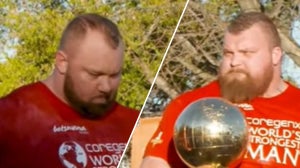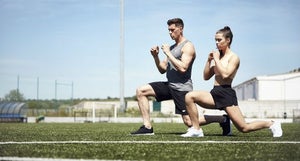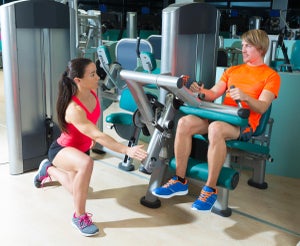So you’re following through your weekly workout plan and you come across some things like Bulgarian Split Squats, Romanian Deadlifts and Russian Twists. These are all great exercises you might think to yourself, but what’s up with all the Eastern Europe countries associated with all of these weightlifting exercises?
No, they’re not actually named after the country for any specific reason, but if you follow any sort of European bodybuilding, weightlifting or Olympic lifting, you’ll find that there are some serious athletes doing some big time work over there. The European’s have been training for big physiques for decades and their training has a large hand in the reason we choose to spotlight them in our own North American routines.
Split Training
When we follow a workout plan that we either come up with on our own or have someone map out for us, it usually involves a split in which we train either one or two muscle groups per day or we train in an upper/lower split. This has become pretty much the standard regimen for most gym goers.
The European’s blow this style of training straight out of the water because their split is mainly divided into 2 parts within a given day. The first part of the split is usually in the morning and performed as early as possible with the strength, compound and more Olympic style lifts. The evening is then focused more on “show”, meaning the workouts are based more on hypertrophy and chasing the pump.

Strength Training
What better way to start off your day then getting under a heavy bar for a 6-8 sets of 3-rep squats? One of the many attributes that European lifting athletes have going for them is that they are based on a foundation of building a stronger muscle that will eventually yield a bigger, more dense muscle.
So any given morning in a Russian gym, you can find bodybuilders and strength athletes alike, lifting together and even performing some of the same workouts. After all, a majority of these athletes compete in bodybuilding contests just a few weeks after they are competing in Olympic style lifting competitions.
Building a foundation from strength based lifts like the squat, deadlift, snatch and clean and press are all great movements that have been used by a number of strength athletes for years as well as the golden area of bodybuilding with guys like Lou Ferrigno, Dave Draper and even Arnold. Here’s what a morning over in a part of Eastern Europe might look like in a training facility:
? Squats- 8 x 3
? BB Walking Lunges- 6 x 5 each leg
? Romanian Deadlifts- 8 x 3
? Farmer's Carries- 5 x 20 meters
This may not look like much on paper, but you’ve got to keep in mind that this is just the strength portion of your day. The rest periods are long and max effort needs to be high for all the sets laid out before you. Keep your form tight and don’t go light on the weight just because you know there’s more work to come later in the day.

Intensity Training
Different than what you’re probably used to when you hear intensity, this type is more associated with a typical bodybuilding routine. There’s really no max effort sets of 3 or less in these workouts- we’re more focused on high quality muscle development with rep ranges in the classic 8-12 range.
The goal of these workouts are to push as much lactic acid into the muscles as possible and promote a hormonal response to trigger muscular growth. Although you may be thinking that strength athletes don’t need this kind of work in their routine and that lifting in this rep range could lead to loss of strength this simply isn't true.
In fact, this type of training helped pick up lagging body parts that could cause bad form and detrimental to injury. Typically, this hypertrophy session doubled up with the morning strength session to hit the same muscle groups. This not only improved strength but the amount of muscle you’re able to put on when training this way is like no other (when coupled with proper nutrition and recovery).
? Leg Press- 4 x 12
? Front Squats- 4 x 15
? Leg Extensions- 4 x 15
? Hamstring Curls- 4 x 15
? DB Lunges- 4 x 12 each leg
? Bulgarian Split Squats- 3 x 15 each leg
? Standing Calf Raises- 3 x 20
? Seated Calf Raises- 3 x 50
As you can see, the intensity portion of the day is not so much about pushing heavy weights (although you do need to go as heavy as possible), but rather it’s about the squeeze and contraction of every rep. The intensity must be high, even in the evenings, and the Europeans are dually known for being able to drown out the world and be in the gym. Many athletes were in top physical condition year round due to this style and this volume of training.

Take Home
Although the Eastern European influence wasn’t derived by one individual, you can see that the European’s knew their stuff when it came to getting big and getting super-human strong. For some serious gains, try to implement some 2-a-day training, especially for those lagging muscle parts! Give credit where credit is due - good work Europe and keep leading the industry!







